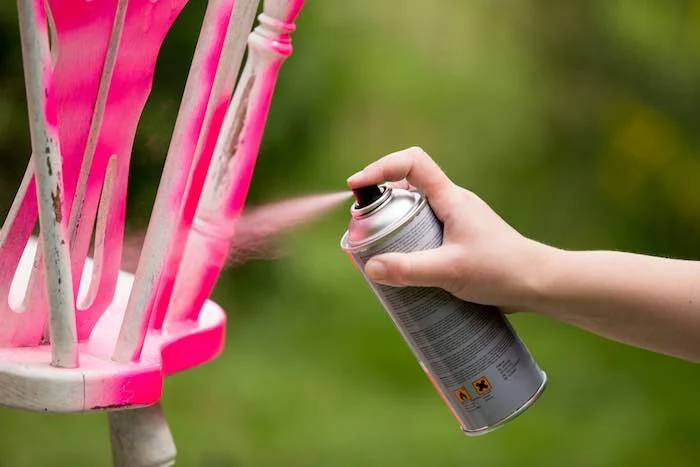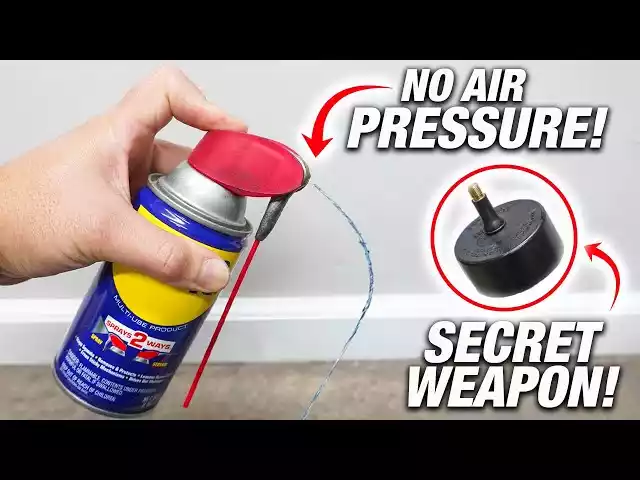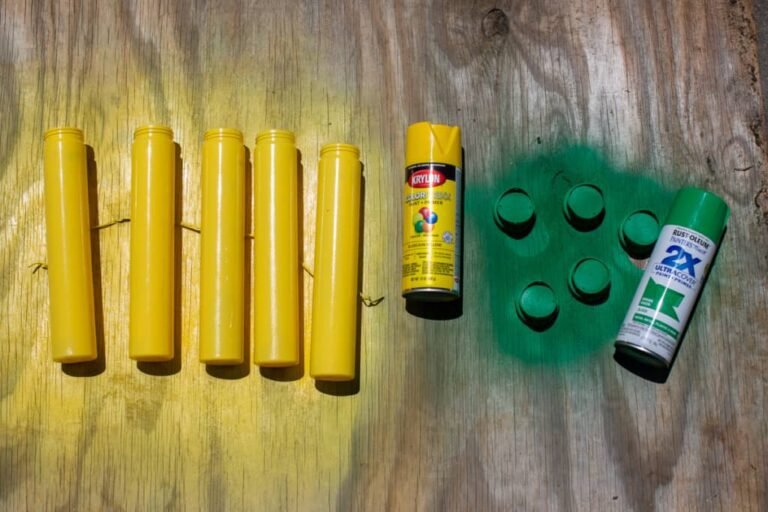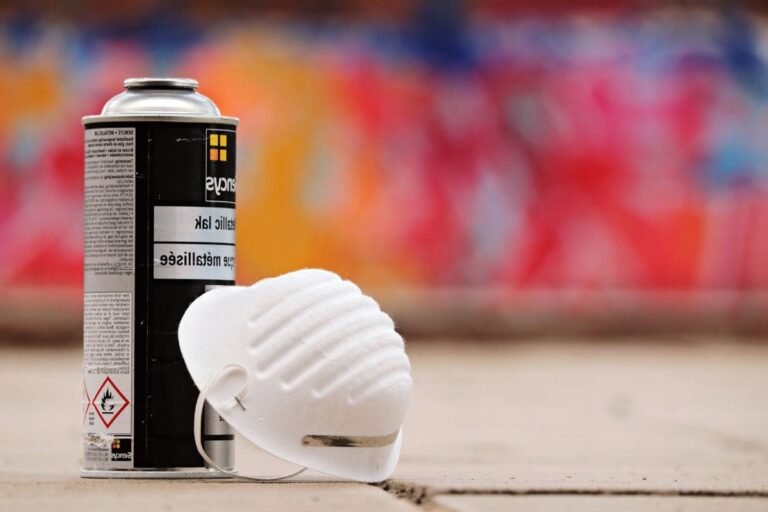What Kind Of Paint Goes In A Spray Gun? 4 Unknown Interesting Facts
When it comes to selecting paint for a spray gun, you have a few options to consider. The most common types of paint that can be used in a spray gun include oil-based, water-based, and solvent-based paints.
Oil-based paint, also known as alkyd paint, contains an oil or resin binder that allows it to adhere well to surfaces and dry to a hard, durable finish. These paints are typically used for projects that require a glossy or high-shine finish, such as automotive painting or furniture refinishing.
Water-based paint, also known as latex paint, is a popular choice for its easy cleanup and low odor. These paints are generally used for interior and exterior house painting, as well as for crafting and DIY projects. Water-based paints are available in a wide range of colors and finishes, from matte to high-gloss.
A solvent-based paint, also known as enamel or lacquer, uses a solvent as a binder to create a durable, long-lasting finish. These paints are often used for industrial or commercial applications, such as painting machinery or equipment and are available in a range of colors and finishes.
It’s important to choose the right type of paint for your spray gun to ensure optimal performance and finish quality. Always check the manufacturer’s recommendations for the type of paint that is compatible with your spray gun, as well as any other important specifications such as viscosity and drying time. With the right paint and equipment, you can achieve a smooth, professional finish for your project.
Types of Paint Spray Gun
There are three main types of paint that are commonly used with spray guns: oil-based paint, water-based paint, and lacquer. Each type of paint has its own unique properties, and it’s important to choose the right type of paint for your project.
Oil-based paint:
Oil-based paint is a popular choice for spray guns, as it dries slowly and provides a smooth, durable finish. It’s also resistant to moisture and can be used for both indoor and outdoor applications. However, oil-based paint requires solvents for cleaning, and it’s not environmentally friendly.
Water-based paint:
Water-based paint is a more environmentally friendly alternative to oil-based paint. It dries quickly and has a low odor, making it a popular choice for indoor applications. However, water-based paint is not as durable as oil-based paint and is not recommended for outdoor use.
Lacquer:
Lacquer is a fast-drying, high-gloss paint that is commonly used for automotive painting and furniture finishing. It’s easy to apply with a spray gun and provides a smooth, durable finish. However, lacquer requires a well-ventilated workspace and is not recommended for indoor use due to its strong odor.
Viscosity:
Viscosity refers to the thickness of the paint and plays a crucial role in determining the type of paint that can be used in a spray gun. Spray guns are designed to work with specific viscosities, and using paint that is too thick or too thin can result in poor performance.
To determine the viscosity of your paint, you can use a viscosity cup, which measures the time it takes for a specific volume of paint to flow through a small hole. Most paint manufacturers provide information on the recommended viscosity range for their paint, which can be used as a guideline when choosing the right paint for your spray gun.
Compatibility with Different Types of Spray Guns:
Different types of spray guns are designed to work with different types of paint, and it’s important to choose a spray gun that is compatible with the type of paint you will be using.
Conventional spray guns:
Conventional spray guns are designed to work with oil-based paint and lacquer. They use a high-pressure stream of air to atomize the paint and provide a fine, even spray pattern.
HVLP spray guns:
HVLP (high volume, low pressure) spray guns are designed to work with water-based paint and other low-viscosity paints. They use a lower-pressure stream of air to atomize the paint, which reduces overspray and provides a softer, more even spray pattern.
Airless spray guns:
Airless spray guns are designed to work with thicker, high-viscosity paints such as latex paint and epoxy. They use high pressure to force the paint through a small tip, which atomizes the paint and provides a fine, even spray pattern.
Do you need to dilute the paint for the spray gun?
In general, yes, you need to dilute paint before using it in a spray gun. Dilution helps to ensure that the paint can be atomized properly, allowing for a smooth and even spray pattern.
The amount of dilution required can vary depending on the type of paint and the specific spray gun being used. As a general rule, most paints will need to be thinned with a solvent such as mineral spirits or water before being used in a spray gun.
The amount of dilution needed can be determined by measuring the viscosity of the paint using a viscosity cup or by following the manufacturer’s recommended mixing ratios. Viscosity is a measure of a liquid’s resistance to flow, and the appropriate viscosity for paint in a spray gun will depend on the type of spray gun being used and the specific requirements of the project.
It’s important to note that over-diluting the paint can result in a thinner, less durable coating, while under-diluting the paint can cause clogs or uneven spray patterns.
How much thinner do I need for 1 liter of paint?
In some cases, the recommended mixing ratio may be expressed as a percentage, such as 10% thinner by volume. In other cases, the ratio may be expressed as a specific measurement, such as 100ml of thinner per liter of paint.
It’s important to note that over-diluting the paint can result in a thinner, less durable coating, while under-diluting the paint can cause clogs or uneven spray patterns.
What is primer used for spray paint?
Primer is a type of paint that is used as an undercoat before applying the topcoat of paint in a spray paint application. It serves several important functions in the spray painting process.
Firstly, primer helps to prepare the surface to be painted by providing a clean, smooth, and consistent base. It can help to cover imperfections, such as scratches or dents, and can also help to seal porous surfaces to prevent the topcoat from soaking in and producing an uneven finish.
Secondly, primer can help to improve the adhesion of the topcoat to the surface being painted. This is especially important when painting surfaces that are not naturally compatible with the topcoat, such as metal or plastic.
Finally, primer can help to improve the durability and longevity of the topcoat. By providing an additional layer of protection against corrosion, fading, and other types of damage, primer can help to ensure that the topcoat lasts as long as possible.
There are several different types of primers available for spray paint applications, including epoxy, acrylic, and urethane-based primers. The type of primer used will depend on the specific project and the surface being painted.
Can you use house paint in an HVLP spray gun?
While it is possible to use house paint in a High Volume Low Pressure (HVLP) spray gun, it is generally not recommended. House paint is typically formulated for use with a brush or roller, and may not be well-suited for use in a spray gun.
One of the primary challenges of using house paint in an HVLP spray gun is achieving the proper viscosity. House paint is often thicker and more viscous than paint formulated for use with spray guns. If the paint is too thick, it may clog the spray gun or produce an uneven finish. If the paint is too thin, it may run or drip on the surface being painted.
How much psi do you need to run an HVLP spray gun?
The exact pressure (in psi, or pounds per square inch) required to run a High Volume Low Pressure (HVLP) spray gun will depend on several factors, including the type of gun being used, the viscosity of the paint being sprayed, and the specific requirements of the project.
As a general rule, most HVLP spray guns require a pressure of between 10 and 20 psi to operate effectively. However, it’s important to note that different models of spray guns may have different pressure requirements, and it’s always best to consult the manufacturer’s instructions before use.
How many Litres per minute do you need for spray painting?
The amount of air (in liters per minute, or L/min) required for spray painting will depend on several factors, including the type of spray gun being used, the size and complexity of the object being painted, and the viscosity of the paint being sprayed.
As a general rule, most spray guns require an airflow rate of between 7 and 12 L/min to operate effectively. However, it’s important to note that different models of spray guns may have different airflow requirements, and it’s always best to consult the manufacturer’s instructions before use.
FAQs:
Q: Can I use any type of paint in a spray gun?
A: No, not all types of paint are suitable for use in a spray gun. As discussed earlier, different types of paint have different viscosities and are designed to work with specific types of spray guns. Using the wrong type of paint can result in poor performance and damage to the spray gun.
Q: Can I thin my paint to make it more suitable for use in a spray gun?
A: Yes, you can thin your paint to make it more suitable for use in a spray gun. However, it’s important to follow the manufacturer’s recommendations for thinning the paint, as over-thinning can result in poor performance and reduced quality of the finish.
Q: How do I clean my spray gun after using it?
A: Cleaning your spray gun after each use is important to ensure that it performs at its best and has a long lifespan. To clean your spray gun, you should follow the manufacturer’s instructions, which typically involve disassembling the gun, cleaning each component with an appropriate solvent, and reassembling the gun.
Q: How much paint is in a 400ml spray can?
A: A 400ml spray can typically contain around 300-350ml of actual paint, with the remaining volume being occupied by propellant and other additives that help to atomize the paint and facilitate spraying.
Q: Can spray paint dry in 2 hours?
A: The drying time of spray paint can vary depending on several factors, including the type of paint, the environmental conditions, and the thickness of the applied coat. In general, spray paint can dry to the touch within 10-30 minutes of application, but it may take several hours or even days for the paint to fully cure and become resistant to damage or smudging.
Conclusion:
Choosing the right type of paint for your spray gun is crucial to achieving a high-quality finish and prolonging the lifespan of your spray gun. By understanding the types of paint available, their viscosities, and compatibility with different types of spray guns, you can make an informed decision when choosing the best paint for your project.
Remember to always follow the manufacturer’s instructions for thinning the paint and cleaning your spray gun, and take proper precautions when using spray guns, such as wearing appropriate protective gear and working in a well-ventilated area. With the right paint and proper technique, your spray gun can be a versatile tool for achieving professional-looking finishes on a variety of surfaces.
Jane Ansems is a highly talented and accomplished spray can artist, known for her intricate, detailed, and thought-provoking works of art. She began her career as a street artist in the early 2010s, quickly gaining recognition for her unique and innovative style.






